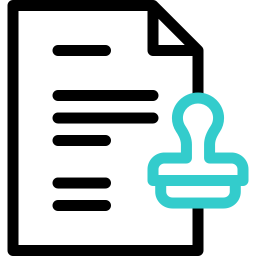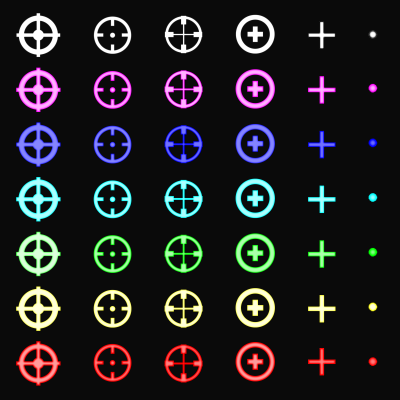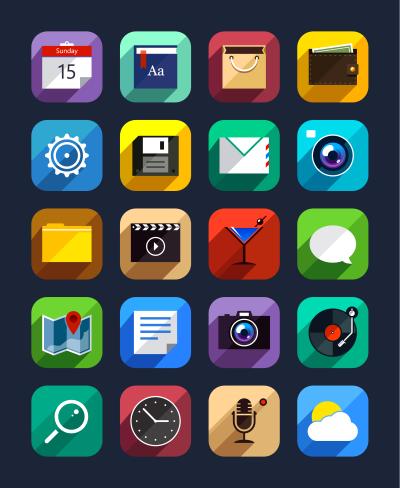Flaticon is a popular resource for free icons that can enhance the visual appeal of your website. With millions of icons available in various styles, Flaticon offers designers and developers the opportunity to find just the right graphic elements to complement their projects. The icons are customizable, allowing you to change colors, sizes, and formats, thus providing flexibility in design. By using Flaticon‘s icons, you can improve user engagement, ensure brand consistency, and enhance the overall aesthetic of your site.
Understanding the Licensing Types for Flaticon’s Icons
 To use Flaticon’s icons legally, you need to understand their licensing structure. Flaticon offers various licensing options, primarily:
To use Flaticon’s icons legally, you need to understand their licensing structure. Flaticon offers various licensing options, primarily:
- Free License: This allows you to use icons for personal and commercial projects, provided you give proper attribution to the icon creator. Always check individual icon licenses to ensure compliance.
- Premium License: For users who prefer not to provide attribution, Flaticon offers a premium subscription service. This grants access to a broader selection of icons and the ability to use them without the need for attribution.
- Attribution Requirements: When using icons under the free license, ensure that the attribution is visible on the webpage or in the project documentation. This includes the author’s name and a link back to Flaticon.
- Modification Rights: Users can modify icons, but it’s important to note that modifications should still comply with the attribution requirements and not misrepresent the original work.
Understanding these licenses is crucial to avoid potential copyright issues. Always read the specific terms associated with the icons you choose, and make sure to maintain compliance to use Flaticon’s resources effectively and ethically.
How to Find Free Icons on Flaticon
 Finding the perfect icon for your website can be a breeze if you know where to look! Flaticon offers a vast collection of icons for various needs, and with a few simple steps, you can easily navigate their platform. Here’s how to find free icons on Flaticon:
Finding the perfect icon for your website can be a breeze if you know where to look! Flaticon offers a vast collection of icons for various needs, and with a few simple steps, you can easily navigate their platform. Here’s how to find free icons on Flaticon:
- Visit Flaticon: Start by heading over to the Flaticon website. You’ll be greeted with a simple, user-friendly interface.
- Use the Search Bar: At the top of the homepage, you’ll find a search bar. Enter keywords that describe the icon you’re after. For example, if you need a “camera,” just type that in!
- Filter Your Results: After performing your search, take advantage of the filtering options on the left. Here, you can choose to see only the free icons by selecting “Free” in the license section.
- Explore Categories: If you’re not sure exactly what you want, browse through the categories. Flaticon has icons sorted into various themes like “Business,” “Technology,” and “Food.” Each category is filled with beautiful, high-quality icons.
- Check Similar Icons: Once you find an icon you like, click on it. Scroll down to see related icons which might give you even more options for your project!
By using these tips, you should be well on your way to finding the ideal icons that suit your website’s design and needs. Remember, there’s a treasure trove of icons just waiting to be discovered on Flaticon!
Steps to Download and Attribute Flaticon Icons Correctly
Now that you’ve found the perfect icons on Flaticon, the next step is to download them and give proper attribution. Here’s a simple guide to make this process smooth:
- Select Your Icon: Click on the icon you wish to download. Make sure it’s a free icon; otherwise, you might need a premium subscription.
- Choose the Format: Flaticon offers icons in various formats, such as SVG, PNG, EPS, and more. Select the format that best fits your needs. For web use, SVG and PNG are popular choices.
- Download the Icon: Click on the “Download” button. If it’s a free icon, ensure you select the correct resolution, especially for PNG files.
- Attribution is Key: To use free icons legally, you need to provide proper credit to the creator. Flaticon makes this easy! When you download an icon, you’ll often see an attribution link that you can copy.
- Include Attribution on Your Website: Add the attribution in a visible place on your website, typically in the footer section. You can write: “Icons made by Freepik from www.flaticon.com.” Adjust based on the specific icon creator.
Following these steps will not only ensure that you’re using Flaticon’s resources correctly but also respect the efforts of the creators. Enjoy enhancing your website with stunning icons!
Best Practices for Integrating Icons into Your Website
Using icons on your website can significantly enhance user experience and visual appeal, but it’s crucial to integrate them thoughtfully. Here are some best practices to consider:
- Consistency is Key: Ensure that the style of the icons aligns with your website’s overall design. Whether you choose flat, outlined, or filled icons, keeping them uniform helps to create a cohesive look.
- Use Appropriate Sizes: Icons should be easily recognizable but not overpower the content. A recommended size is between 24px and 48px for most situations. Make sure to adjust them responsively for different devices.
- Space Matters: Don’t forget about whitespace! Icons should have adequate spacing around them to prevent clutter. This helps users focus and improves clickability.
- Color Considerations: Use colors that complement your brand palette. Contrast is essential – make sure that icons stand out against the background and are easily visible.
- Accessibility: Include alt text for each icon. This not only aids in SEO but also helps visually impaired users understand the content better.
- Meaningful Use: Choose icons that genuinely reflect the purpose behind their use. For instance, a shopping cart for e-commerce or a phone for contact options—icons should enhance understanding, not confuse it.
By following these best practices, you can ensure that your use of icons adds value rather than distracting from your site’s message.
Common Mistakes to Avoid When Using Icons from Flaticon
While Flaticon offers a wealth of icons, it’s easy to make mistakes in their usage. Here are some common pitfalls to avoid:
- Ignoring Licensing Rules: One of the biggest mistakes is not paying attention to the icon’s licensing terms. Always make sure you comply with attribution requirements, or choose icons that allow for commercial use without credit if you prefer.
- Overloading with Icons: Don’t go overboard! Using too many icons can overwhelm your visitors. Stick to a few essential icons that guide users effectively.
- Neglecting Responsiveness: Ensure icons are responsive. If they look great on desktop but don’t scale well on mobile, you might lose visitors. Test how they appear across devices.
- Using Icons Inappropriately: Avoid using icons that mislead or misrepresent functionality. For example, using a lock icon for unrelated content can cause confusion.
- Forgetting about Color Blindness: Be aware that not everyone perceives colors the same way. Use icon shapes and patterns to convey information, not just color.
- Failing to Keep Icons Updated: As your brand evolves, so should your icons. Regularly review whether the icons align with your current branding and messaging.
Avoiding these common mistakes will help you effectively integrate Flaticon’s icons into your website, enhancing your site’s functionality and visual communication.
Alternatives to Flaticon for Free Icon Resources
If you’re exploring options beyond Flaticon for free icons, you’re in luck! The web is brimming with fantastic resources that provide high-quality icons suitable for various designs. Here are some popular alternatives you might find useful:
- Icons8 – Offering a diverse range of icons, Icons8 allows users to edit icons directly on their platform. You can change colors and sizes before downloading, which is a great feature for custom branding.
- FontAwesome – Known primarily for its icon fonts, FontAwesome provides a multitude of icons suitable for web development. As a bonus, they offer integration with frameworks like Bootstrap.
- Material Icons – Created by Google, Material Icons follow the Material Design principles. They are easy to implement and perfect for web apps seeking a clean, modern aesthetic.
- The Noun Project – This platform boasts an extensive collection of icons created by talented designers around the world. You can search for any icon and find unique styles that suit your project.
- Freepik – While primarily a graphics resource, Freepik offers a vast library of free vector icons and illustrations. Just remember to attribute the authors as required!
While these alternatives provide great resources, always check their licensing agreements. This diligence ensures you are using icons legally and supporting the original creators. Happy searching for that perfect icon!
Conclusion and Final Thoughts on Using Icons Legally
In conclusion, utilizing icons can significantly enhance your website’s visual appeal and user experience. However, navigating the world of icon usage legally is crucial. Here are a few key takeaways to keep in mind:
- Always Check Licensing: Before downloading or using any icon, ensure you understand the licensing terms. Are they free for commercial use? Do you need to provide attribution?
- Attribute Creators: If the license requires attribution, be sure to give credit to the original designer. It’s a small gesture that supports the creative community.
- Consider Alternatives: If Flaticon doesn’t meet your needs, explore the alternatives mentioned. Each has its unique offerings, and many provide icons that can be customized to fit your design perfectly.
- Stay Updated: Licensing agreements can change, so it’s a good habit to check for any updates regularly, especially if you are relying on free resources.
By being mindful of these aspects, you can confidently integrate icons into your web projects while respecting the hard work of their creators. Happy designing!


